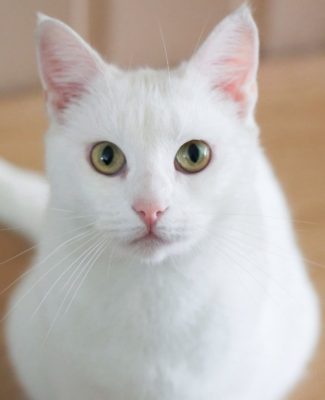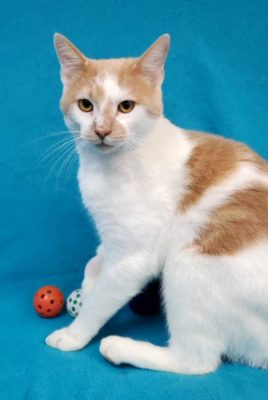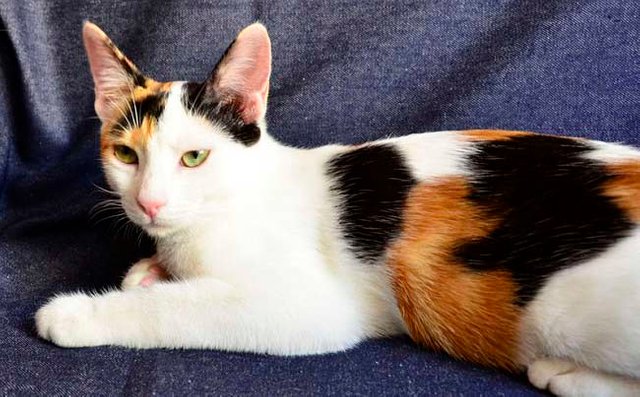Anatolian Cat

The Anatolian cat is an intelligent, active, and inquisitive pet. It is strongly attached to its owner and can spend all the time with him. Representatives of the breed have remarkable intelligence. If they need something, they will point it out with sounds and gestures. Cats also have a sense of rhythm and perceive music well, and can move to the beat.
Table of Contents
Breed Information
| Origin | Turkey |
| Size | 23-28 cm |
| Weight | Males 6-7 kg Females 4-5 kg |
| Fur Type | Short-haired |
| Color | Gray, white, blue, black, ginger, tortoiseshell |
| Lifestyle | Outdoors, indoors |
| Lifespan | 15-17 years |
| FIFe Classification | – |
| WCF Classification | Group 3: “Short-haired” Breed designation – ANA |
| TICA Classification | – |
| Group | Short-haired cats, cats for kids |
| Price | No information |
Breed Photos
Origin History
The Anatolian cat first appeared in the Armenian highlands more than 1,000 years ago. It was wild until the inhabitants of the Anatolian region domesticated it. Hence the name of the breed. The Anatolian cat is often confused with the Turkish Van. Both breeds originated from an area near Lake Van and bear an outward resemblance.
Despite its thousand-year history, the cat only became world-famous in the early 1990s. At that time, three Turkish breeds presented themselves at a show in Germany. The Anatolian received the greatest public recognition. But until the beginning of the XXI century, it was still considered a variety of Turkish Van. Only in 2000 was it officially recognized as a separate breed.
Appearance
The breed is characterized by dimorphism; that is, cats are noticeably larger than cats. Both have a medium-length body; the front part is wider than the pelvis. The pet’s neck is massive. The head is medium-sized, triangular. The chin and cheekbones are well defined. The ears are large, set high. The eyes are large, slanted, and can be different colors.
The limbs of the cat are proportional to the body; not long, the paws are powerful. The tail is medium-length, dropped downward. The coat of the Anatolian cat has no undercoat, short and soft. Color can be different: white, gray, red, black, blue, tortoiseshell.
Character
The Anatolian cat is an intelligent, active, and inquisitive pet. It is strongly attached to its owner and can spend all the time with him. Representatives of the breed have remarkable intelligence. If they need something, they will point it out with sounds and gestures. Cats also have a sense of rhythm and perceive music well, and can move to the beat.
They get on well with children, do not mind to play and frolic with them. Strangers are quite normal. Anatolian cat easily finds common ground with other animals. Except for that, small animals, like birds and rodents, can be perceived as prey.
Care
A cat can be kept both in an apartment and in a house with a plot. The latter option will be even a plus. After all, the pet loves to walk in the fresh air; its wild nature makes it felt. To prevent the tail from getting into trouble during the walk, use the harness and leash.
In terms of hair care, the Anatolian cat is not fussy. Short, soft hair is enough to comb it once every two weeks. The pet likes water procedures, but bathing often is not recommended. Do not forget about claw trimming every two weeks, and buy a cat scratching post. It will keep your furniture intact. Be sure to buy your pet a litter box and change the litter in it regularly.
Education
Thanks to its sharp mind and obedience, the cat is easy to raise. It quickly becomes accustomed to the litter box and perfectly understands its owner. The breed lends itself well to training. If you take the time, the pet can be quickly taught basic commands and tricks. The main thing in the process of training is to support him and motivate him with treats. Don’t put moral pressure on the pet; let it perceive it as a game. Eventually, you can teach the cat to recognize objects and benefit itself. For example, an Anatolian cat can fetch its owner’s slippers or the TV remote control.
Common Diseases
The naturally bred breed is not prone to genetic diseases. However, like all other cats, the Anatolian is prone to the following diseases:
- parasites (worms, ticks, fleas);
- toxoplasmosis;
- eczema;
- rabies.
Give your cat monthly deworming and shampoo for fleas. Clean plaque off your cat’s teeth at least three times a week. It will prevent dental disease. Once every six months, you should take your dog to the veterinarian and have him routinely vaccinated.
Nutrition
Despite an excellent appetite, the Anatolian cat is not prone to obesity. Specialists recommend feeding the dry pet food. It is fast and useful because they include the necessary vitamins and minerals. The food is also quite good at coping with plaque.
As for natural food, the cat likes raw meat. However, it is better to boil it all the same. The basis of the diet is ideally lean meat and by-products. Veal and chicken are suitable for this criterion. Eggs, saltwater fish, and cereals are also not superfluous. The cat can also be given dairy products: cottage cheese, sour cream, kefir. Do not forget about fruits, vegetables, and herbs. They contain vitamins and minerals and are very useful for the pet’s body.
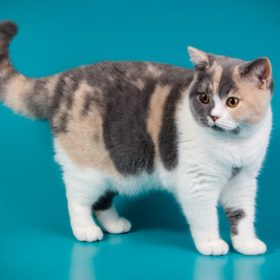 British Shorthair
British Shorthair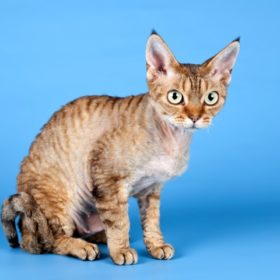 Devon Rex
Devon Rex Turkish Van
Turkish Van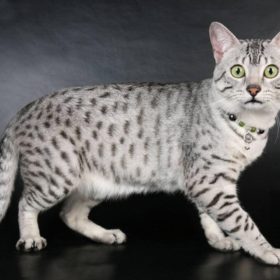 Arabian Mau
Arabian Mau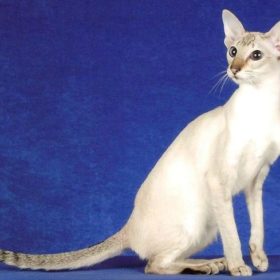 Colorpoint Shorthair
Colorpoint Shorthair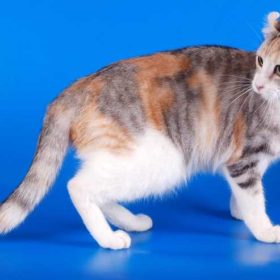 American Curl Shorthair
American Curl Shorthair